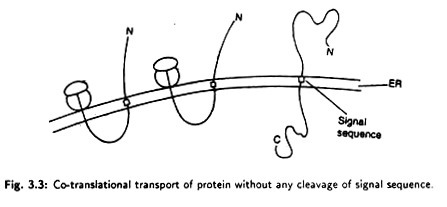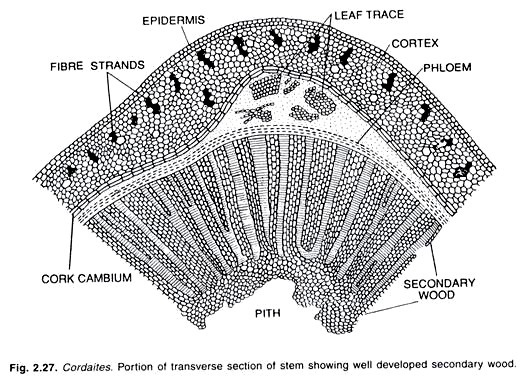ADVERTISEMENTS:
In this article we will discuss about the General Characters and Classification of Phylum Cnidaria.
General Characteristics of Phylum Cnidaria:
Some of the important General Characters of Phylum Cnidaria are listed below:
1. Habitat:
ADVERTISEMENTS:
All are aquatic and are mostly marine, except a few like Hydra, are fresh water.
2. Body Form:
Body form varies considerably. Many colonial cnidarians like Obelia (Fig. 4.15) are trimorphic, having three kinds of zooids — polyps, blastostyles and medusae. Occurrence of more than one type of individuals in their colonies performing different functions is called polymorphism.
3. Symmetry:
ADVERTISEMENTS:
They show radial symmetry.
4. Germ Layers:
Cnidarians are diploblastic animals, i.e., derived only from two embryonic germ layers, viz., ectoderm and endoderm.
5. Level of Organization:
They are the first multicellular animals from evolution point of view which show tissue level of organization.
6. Body wall (Fig. 4.12):
The body wall consists of two layers of cells; outer epidermis and inner gastro dermis. There is a non-cellular gelatinous layer, called mesogloea, between the epidermis and the gastro dermis.
1. Epidermis:
ADVERTISEMENTS:
The epidermis consists of the following cells:
(i) Epitheliomuscular cells. They provide protection and act as muscles,
(ii) Cnidoblasts (= stinging cells). Name of the phylum Cnidaria is due to the presence of these cells. A cnidoblast (also called nematoblast) has nematocyst (‘stinging organ’). The nematocyst consists of capsule, shaft and thread tube (Fig. 4.13). The nematocysts are used for defence and offence,
(iii) Interstitial cells. They are reserve cells and are called totipotent cells which can be converted into any type of cells,
ADVERTISEMENTS:
(iv) Nerve cells. They form a primitive nervous system,
(v) Sensory cells. They are sensory in function.
Differences between Nematobiast and Nematocyst:
2. Gastro dermis:
The gastro dermis comprises:
(i) Nutritive muscular or digestive cells. Intracellular digestion takes place inside these cells. They also act as muscles;
(ii) Gland cells. They secrete digestive enzymes for extracellular digestion;
ADVERTISEMENTS:
(iii) Interstitial cells;
(iv) Nerve cells and
(v) Sensory cells.
Functions of interstitial cells, nerve cells and sensory cells are similar to the cells found in epidermis.
7. Digestive Tract:
Cnidarians have a central gastro vascular cavity (coelenteron) with a mouth, which also acts as anus. Thus there is present incomplete digestive tract.
ADVERTISEMENTS:
8. Digestion:
Both intra- and extra-cellular digestion are present.
9. Respiration and excretion:
Respiration and excretion are carried out through body surface by diffusion. Ammonia is chief excretory waste.
10. Primitive Nervous System:
A primitive form of ‘Nervous system’ is found in these animals. It consists of a network of nerve cells and their processes. Statocyst is a sense organ for balance which is first time developed in cnidaria.
ADVERTISEMENTS:
11. Skeleton:
In some coelenterates the body is supported by horny or calcareous exoskeleton or endoskeleton.
12. Reproduction:
Reproduction is both by asexual (budding) and sexual methods. Both gonads and buds arise from the interstitial cells. The power of regeneration is also developed.
13. Development:
The cleavage is holoblastic. Direct or indirect development is found. In Obelia planula larva is present. However in Aurelia planula, scyphistoma and ephyra larvae are found.
14. Metagenesis:
In Obelia, polyps reproduce medusae asexually and medusae form the polyps sexually. Such alternation of asexual and sexual phases in the life cycle of Obelia is called metagenesis. It should not be confused with alternation of generations as found in plants where one phase is haploid and other is diploid. Here both phases are diploid.
Unique Features:
(i) Presence of cnidoblasts for defence and offence,
(ii) Network of nerve cells acting as ‘‘Primitive Nervous System.”
Advancement over Sponges:
(i) Tissue level of organisation.
(ii) Digestive tract.
(iii) Nerve cells and sensory cells.
Classification of Phylum Cnidaria:
Chiefly on the basis of the dominance of medusoid or polypoid phase in the life cycle, the phylum Cnidaria is divided into three classes.
Class 1. Hydrozoa (Gk. Hydros- water, zoon- animal):
Either only polyps are found or polyps and medusae are present. Examples: Hydra, Obelia (sea-fur) and Physalia, Porpita, Velella, Millepora (hydroid coral).
Class 2. Scyphozoa (Gk. skyphos- cup):
They are represented by medusae. Examples: Aurelia, Rhizostoma
Class 3. Anthozoa (Gk. anthos- flower):
They are represented by the polyp form. Medusa form is absent. Examples: Gorgonia, Adamsia, Alcyonium (dead man’s finger), Fungia (mushroom coral), Pennatula, Gorgonia, Corallium (red coral), Astraea, Meandrina, Madrepora (stag-horn coral), Tubipora (organ pipecoral).
Hydra:
Hydra is a fresh water coelenterate and is carnivorous. Hydra has great power of regeneration which was first discovered by Trembley (1774). Both bisexual and unisexual Hydras are found. A unicellular green alga Zoo chlorella lives in nutritive muscular cells of Hydra viridissima (Green Hydra). The alga utilizes metabolic wastes of host cells like CO2, water, etc., for photosynthesis.
The host Hydra is benefitted by utilizing O2 released in photosynthesis by the alga. Such association by which both organisms are mutually benefitted is called symbiosis. Hydra oligactis (brown Hydra), Hydra vulgaris (colourless Hydra) and Hydra gangetica (pinkish white Hydra) are some other species.
Obelia — The Sea Fur:
Obelia is polymorphic. The three types of individuals are polyps, blastostyles and medusae. The polyps are mainly nutritive in function, while the blastostyles give rise to reproductive individuals, the medusae by budding. The medusae contain gonads for sexual reproduction. Obelia is carnivorous.
Physalia— The Portuguese-man-of-war:
A gas gland present inside the pneumatophore secretes a gas which helps the animal to float over the water surface. Physalia exhibits a remarkable example of polymorphism and division of labour.
Just below the pneumatophore are hanging down the three types of zooids and tentacles:
(i) Dactylozooids serve in catching the food and are also the organs of defence,
(ii) Gastrozooids are nutritive zooids.
(iii) Gonozooids are reproductive zooids. The poison of dactylozooids is neurotoxic which is very harmful.
Velella — The “Sail-by-the wind”:
It also shows polymorphism. The pneumatophore is flat and contains air and bears a vertical sail on the top. The sail drives the colony along the wind. On the lower side, a single large gastrozoid bears mouth. The gonozooids bear medusae. The margin of the disc has dactylozooids bearing nematocysts.
Porpita:
It also shows polymorphism. Porpita resembles Velella except that it does not have sail and has a circular disc-like pneumatophore.
Aurelia— The Jelly fish:
The body of Aurelia is somewhat similar to that of the medusa of Obelia. There are present four large tapering oral arms. Aurelia is unisexual bearing four gonads (ovaries or testes) in the subumbrellar side.
ADVERTISEMENTS:
Rhizostoma — The Jelly fish:
The umbrella shaped body is without marginal tentacles. Numerous mouths are present on the oral arms. The oral arms are bifurcated distally to form eight long terminal appendages.
Adamsia— The Sea anemone:
Adamsia is found attached to the empty shell of gastropod (mollusc) occupied by hermit crab (genus Eupagarus). It shows commensalism. The association between Adamsia palliata and Eupagarus prideauxi (hermit crab) is a classical example of commensalism.
Commensalism is a relationship between two living individuals of different species in which one is benefitted while other is neither harmed nor benefitted except to a negligible extent. Adamsia is transported from one place to the other by hermit crab which lives inside the shell.
Astraea The Star coral:
The polyp possesses a basal cup of calcium carbonate known as corallite (skeleton of polyp). The corallite is secreted by the epidermis of the polyp. The exoskeleton of the whole colony is called corallium.
Meandrina sinuosa— The Brain Coral:
Meandrina bears on its surface long winding valleys separated by ridges. The valleys are occupied by compound polyps which are formed from ordinary polyps. The surface of the colony is marked by convolutions (fissures) as found in the human brain. That is why Meandrina sinuosa is called ‘the brain coral.’
Pennatula— The Sea pen or Sea feather:
The sea pen looks like a quill (a type of feather). Pennatula is carnivorous and phosphorescent. The colony is dimorphic (two types O- zooids),
(i) Siphonozooids, found on the sides of the rachis on the dorsal side, cause circulation of water in the canals of the colony,
(ii) Auto zooids are nutritive in function and lie in a single row on each pinnule.
Gorgonia— The sea fan:
All the branches form a hand-held fan-like network. Gorgonia is dimorphic. The zooids are of two types: autozooids for feeding and siphonozooids for driving a current of water through the colony.






